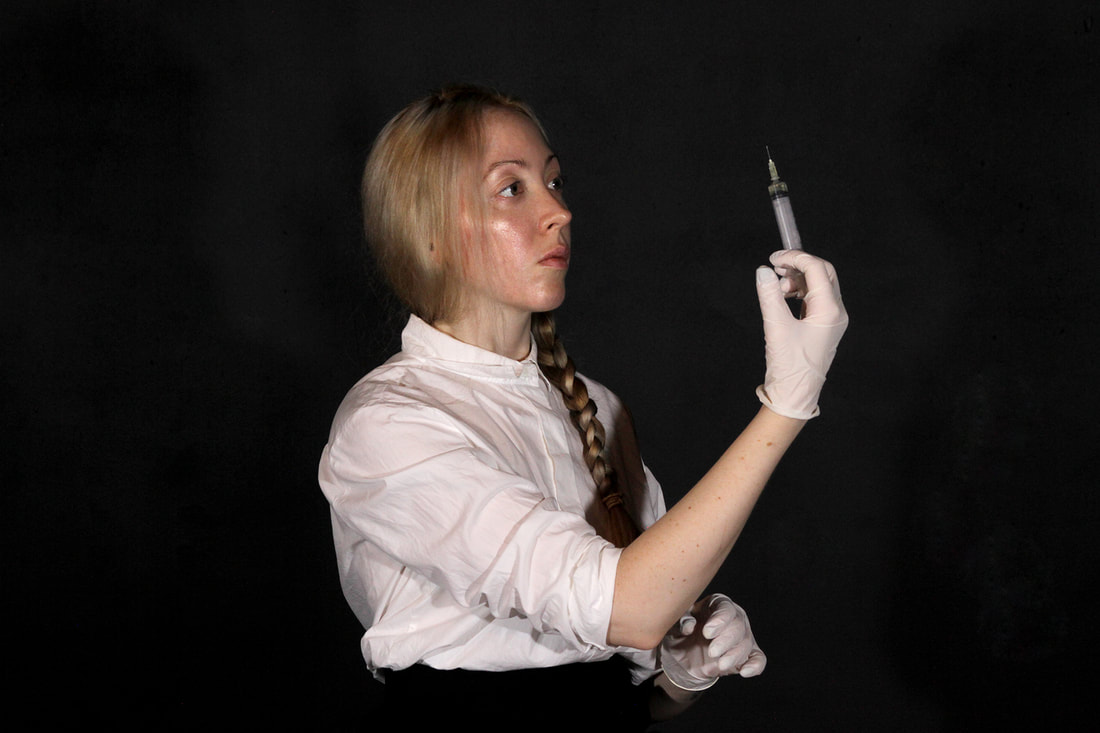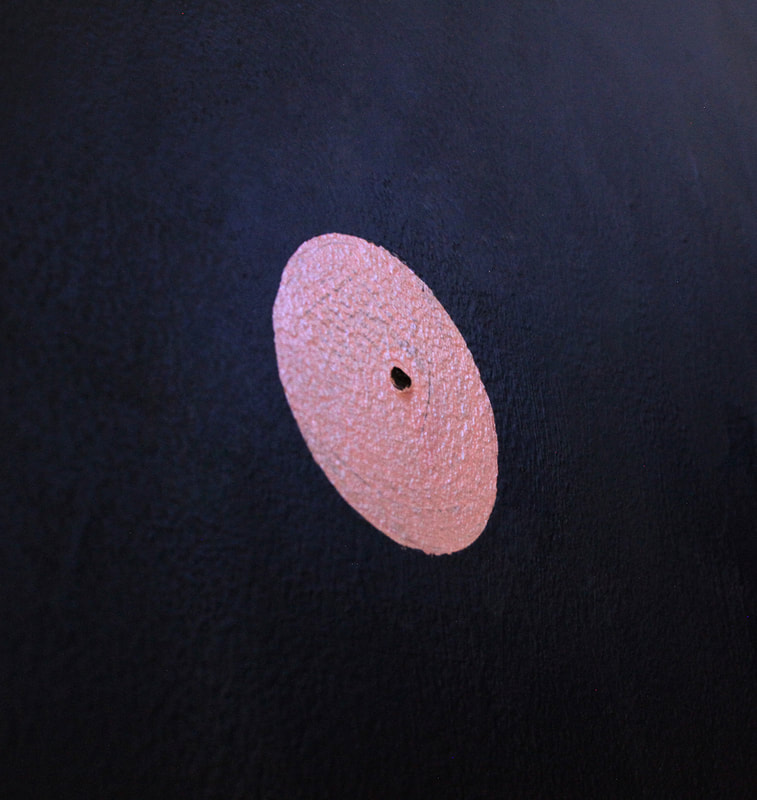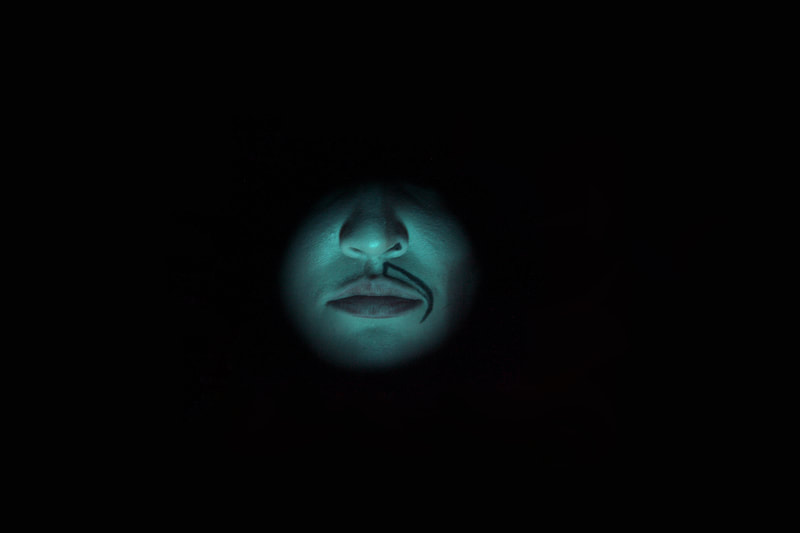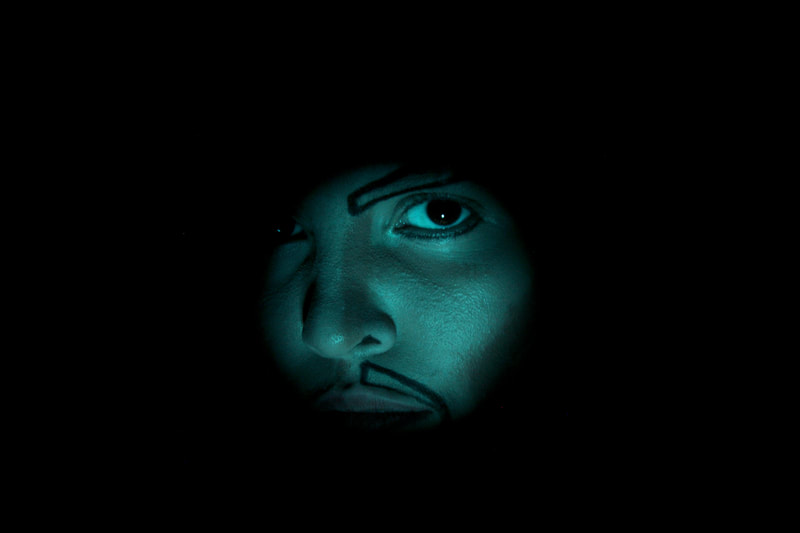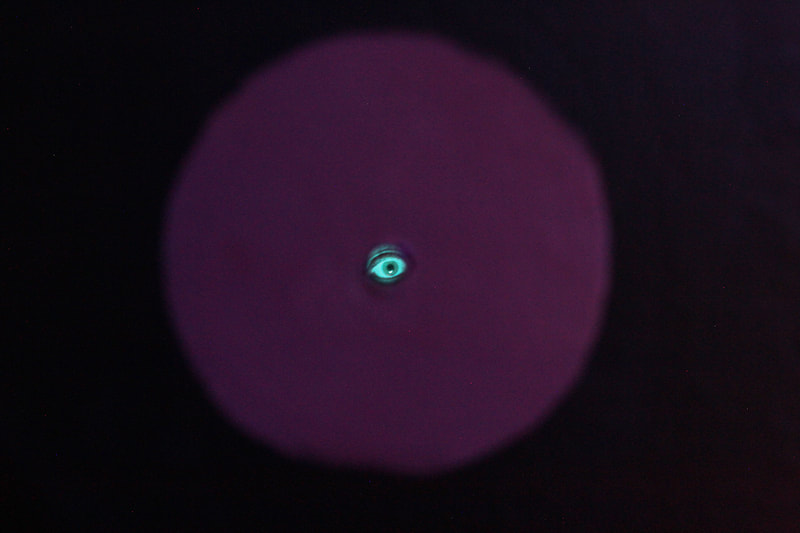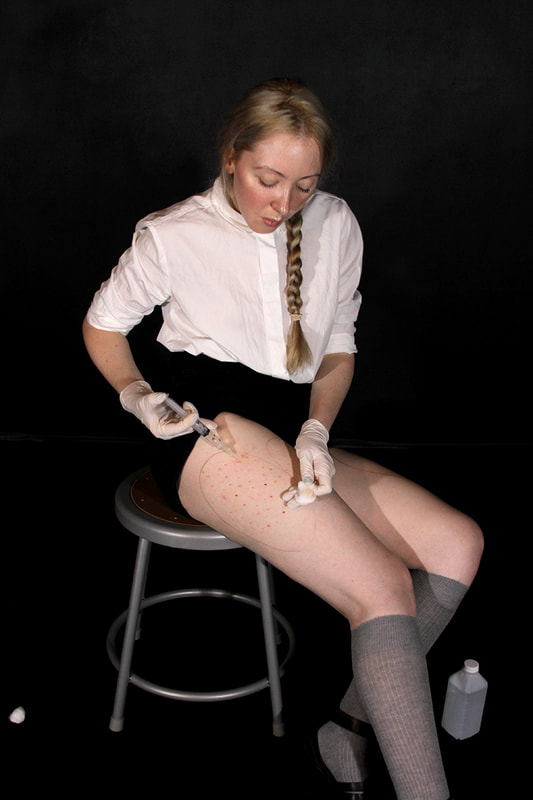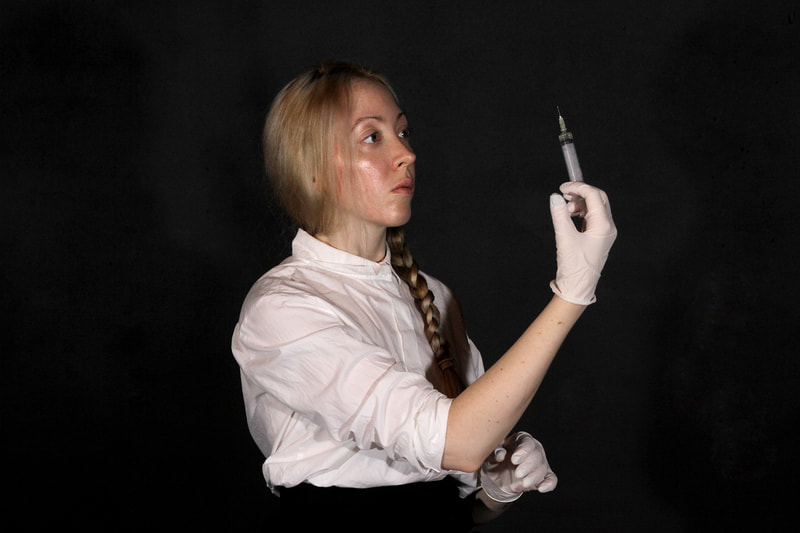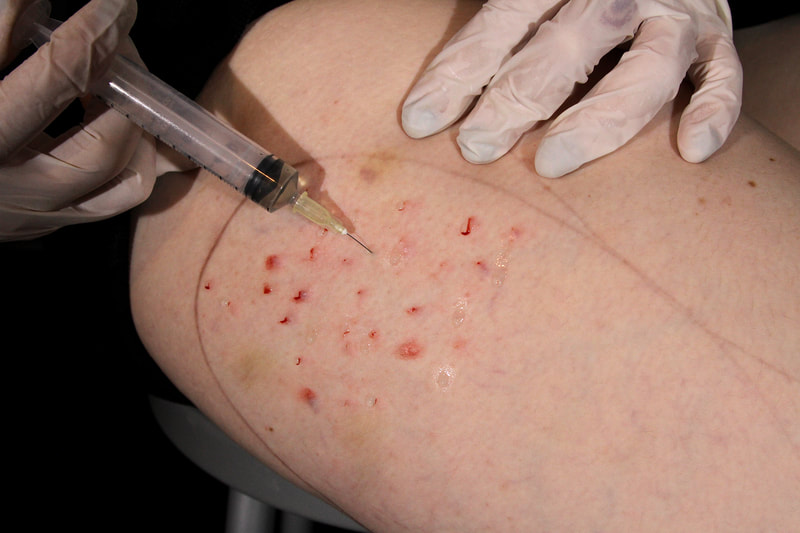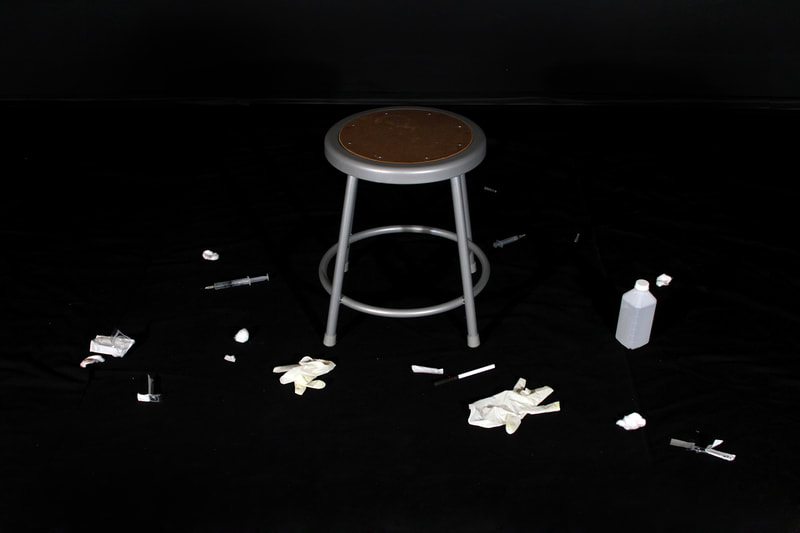|
Review: Layers of Erasure AC Institute, NYC July 2019 by Damariz Damken Layers of Erasure by Natacha Voliakovsky (Argentina) and Julha Franz (Brazil) is a performance that questions the ephemerality of the visible and tangible through our perception and subjection to social, political and gendered violence to unmask what is “real”. As Latin American artists Voliakovsky and Franz collectively position their political critiques by exercising their autonomy to transform the human body as praxis. They juxtapose their approaches to performance in conjunction to create complementary pieces that dialogue with one another, while simultaneously opening a conversation with the audience. Upon entering the performance space, the artists keep themselves out of plain sight, leaving the audience to wander a seemingly empty room and instead observe video recordings of each artist undergoing independent performances. These videos in themselves reflect a critical argument of the artists’ line of work and practice, and present yet another layer beneath which the artists choose to conceal themselves. Brazilian artist, Julha Franz, situates her piece from within a boxed space elusive to the eye as just another black wall in the gallery. However, upon closer observation, one notices light escaping from cautiously carved peeping-holes that outline a figure: one hole at eye level, two in the chest resembling nipples, and one centered at groin level. The viewer is compelled to find the so-far hidden artists and in looking through the holes, satiates their curiosity. As a queer femme artist, Franz’ line of work centers on transforming herself and body by exploring drag culture and playing with the hyper-politicized intersections of gender and sexuality through performance. Politically, Franz’ work protests and challenges pertinent issues of violent repression against queer and female identities. In hiding behind the black gallery walls, she performatically subjects herself back into the closet, physically and metaphorically. Franz’s piece interacts with the audience by also inviting them to participate in the ‘role-play’ of performance by becoming a voyeur, observing through the peeping-holes. We find Franz painting her face with makeup as she transforms into a Drag King. This vision immediately forces the audience to question the premise of Franz’s hiding and feels as though they are intruding in a private ritual, thus exposing the taboo. In continuing to observe through the remaining holes, the audience now as another character in the performance, observes how Franz chooses to reveal and conceal parts of her body. She leaves one side of her chest exposed and the other covers her nipple with a piece of black tape. Looking into the last hole, the viewer expects to observe the groin of a human body given its location but is instead dazed by a bright light. In this way, Franz reappropriates the trope of the male-gaze by forcing the viewer into the role of “Peeping Tom”. Her political statement subverts the hetero-centric patriarchal stereotypes of Drag culture and Queerness. And through this subjective role-reversal, regains her autonomy as a dissident identity outside the frame that chooses the parameters through which they can be seen. Simultaneously, Natacha Voliakovsky constructs her frame by arranging the equipment utilized for her performance hung in a horizontal line against the wall: a pair of medical scissors, two latex gloves, a syringe, a bag of cotton balls, a stool resting on its side on the floor. The empty sterile environment once again leaves the audience with an unsettling feeling of discomfort as if out of place. Eventually, Voliakovsky appears dressed modestly in monochrome. She slowly approaches the “operating table” set up and begins prepping for her performance by assembling an injection. Sitting on the stool, Voliakovsky proceeds her durational performance lasting nearly forty minutes by injecting her legs over and over again in micro doses of anti-cellulite solution until the syringe is empty. As an Argentine artist, Voliakovksy’s political narrative pushes the boundaries of the human form in its most viscerally vulnerable essence to expose its strength and resilience. Her praxis challenges what is perceived or understood as “natural” for the human body by engaging with her own physical self as a warred territory. Voliakovsky literally embodies this struggle for dominion by physically and metaphorically bearing the pain and violence of patriarchal political and cultural regimes. She too reappropriates this repression by subjecting herself to a procedure socioculturally understood as a private matter. However, in constructing her own space and assuming the role of both administrator and patient against the public view, Voliakovsky rejects confining herself into a concealed clinic scenario dominated by male practitioners and reclaims the authority to permanently transform her own body according to her terms. In bearing witness, the audience is forced to contemplate yet another taboo ritual and questions the internalization of their own physical and psychological repression. Situating these performances within our contemporary time and space in New York City, these Latin American artists raise critically relevant questions of political body autonomy and gendered violence worldwide. At the peak of Pride celebrations and preparations, Natacha Voliakovsky and Julha Franz carve at the root of the crises driving the urgency for these social movements. Abortion rights and access in the United States continue to be under attack at the same pace that the fight for legalized abortion in Argentina has culminated in protests nationwide. The deaths of over ten transgender women in the United States alone, most recently Layleen Polanco Extravaganza 27; the sentencing of Mariana Gomez (Argentina) to one year in prison for kissing her wife; and Brazil’s highest reported LGBTQ murder rate in the world, reveal the war, violence and repression against marginalized bodies and identities persists. Franz and Voliakovsky juxtapose their subjectivity, insisting we collectively reconsider our own confinement and compliance as both victims and prosecutors of the structures of violence that coerce the erasure of our bodies. They expose themselves as vessels revealing difficult truths and carry a question that seems easy to ask but hard to answer: What do the layers of our own erasure truly conceal?
2 Comments
|
CONTRIBUTORSIan Deleón Archives
July 2023
|
|
MISSION // Based in Brooklyn, NYC, PERFORMANCE IS ALIVE is an online platform featuring the work and words of current performance art practitioners. Through interviews, reviews, artists features, sponsorship and curatorial projects, we aim to support the performance community while offering an access point to the performance curious.
Performance Is Alive is a fiscally sponsored project of Fractured Atlas, a 501(c)(3) charity. Contributions made payable to Fractured Atlas for the purposes of Performance Is Alive are tax-deductible to the extent permitted by law. |
